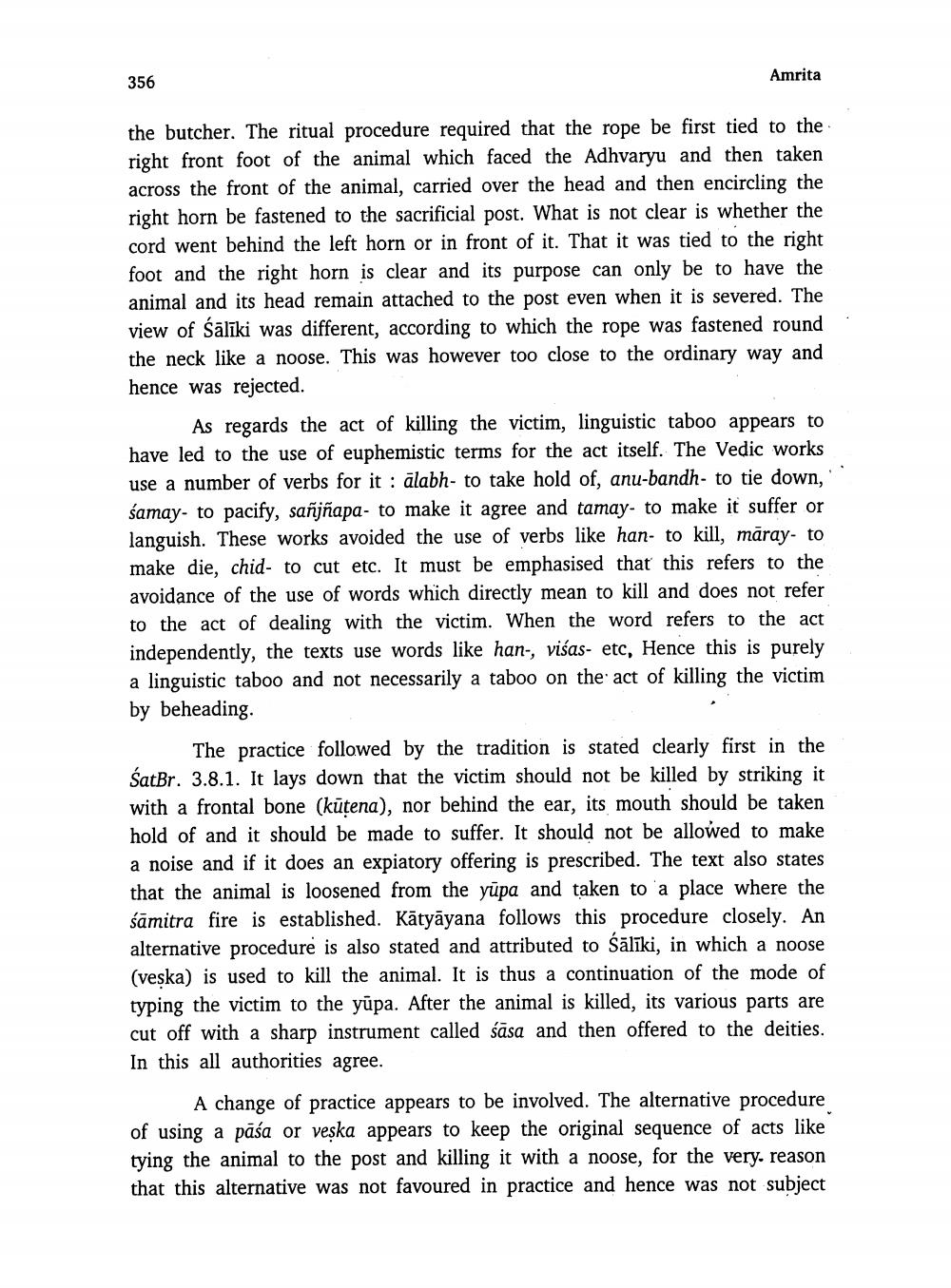________________
356
Amrita
.
the butcher. The ritual procedure required that the rope be first tied to the right front foot of the animal which faced the Adhvaryu and then taken across the front of the animal, carried over the head and then encircling the right horn be fastened to the sacrificial post. What is not clear is whether the cord went behind the left horn or in front of it. That it was tied to the right foot and the right horn is clear and its purpose can only be to have the animal and its head remain attached to the post even when it is severed. The view of Sālīki was different, according to which the rope was fastened round the neck like a noose. This was however too close to the ordinary way and hence was rejected.
As regards the act of killing the victim, linguistic taboo appears to have led to the use of euphemistic terms for the act itself. The Vedic works use a number of verbs for it : alabh- to take hold of, anu-bandh- to tie down, samay- to pacify, sanjñapa- to make it agree and tamay- to make it suffer or languish. These works avoided the use of verbs like han- to kill, māray- to make die, chid- to cut etc. It must be emphasised that this refers to the avoidance of the use of words which directly mean to kill and does not refer to the act of dealing with the victim. When the word refers to the act independently, the texts use words like han-, visas- etc, Hence this is purely a linguistic taboo and not necessarily a taboo on the act of killing the victim by beheading.
The practice followed by the tradition is stated clearly first in the SatBr. 3.8.1. It lays down that the victim should not be killed by striking it with a frontal bone (kūtena), nor behind the ear, its mouth should be taken hold of and it should be made to suffer. It should not be allowed to make a noise and if it does an expiatory offering is prescribed. The text also states that the animal is loosened from the yūpa and taken to a place where the śāmitra fire is established. Kätyāyana follows this procedure closely. An alternative procedure is also stated and attributed to śālīki, in which a noose (veska) is used to kill the animal. It is thus a continuation of the mode of typing the victim to the yūpa. After the animal is killed, its various parts are cut off with a sharp instrument called śāsa and then offered to the deities. In this all authorities agree.
A change of practice appears to be involved. The alternative procedure of using a pāśa or veska appears to keep the original sequence of acts like tying the animal to the post and killing it with a noose, for the very. reason that this alternative was not favoured in practice and hence was not subject




